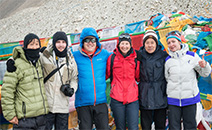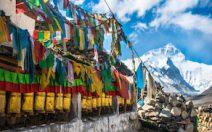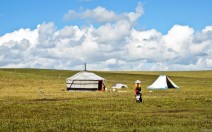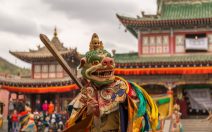No 1: Potala Palace
Perched upon Marpo Ri hill, 130 meters above the Lhasa valley, the Potala Palace rises a further 170 meters and is the greatest monumental structure in all of Tibet, the Potala Palace is 13 stories high and holds countless treasures in its many rooms. Built in 637 AD, the Potala has been home to the Dalai Lama lineage for more than a thousand years. The building which towers above the city of Lhasa rises from the slopes of Mount Marpori, for which reason it is known locally as the Tse Podrang (summit Palace). The outer section, known as the White Palace has functioned as the traditional seat of government and winter residence of Dalai Lamas, while the inner section known as the Red Palace contains outstanding temples and the reliquary tombs of eight past Dalai Lamas. In terms of global perception, it is this relic of Tibet’s past, present, and future aspirations.
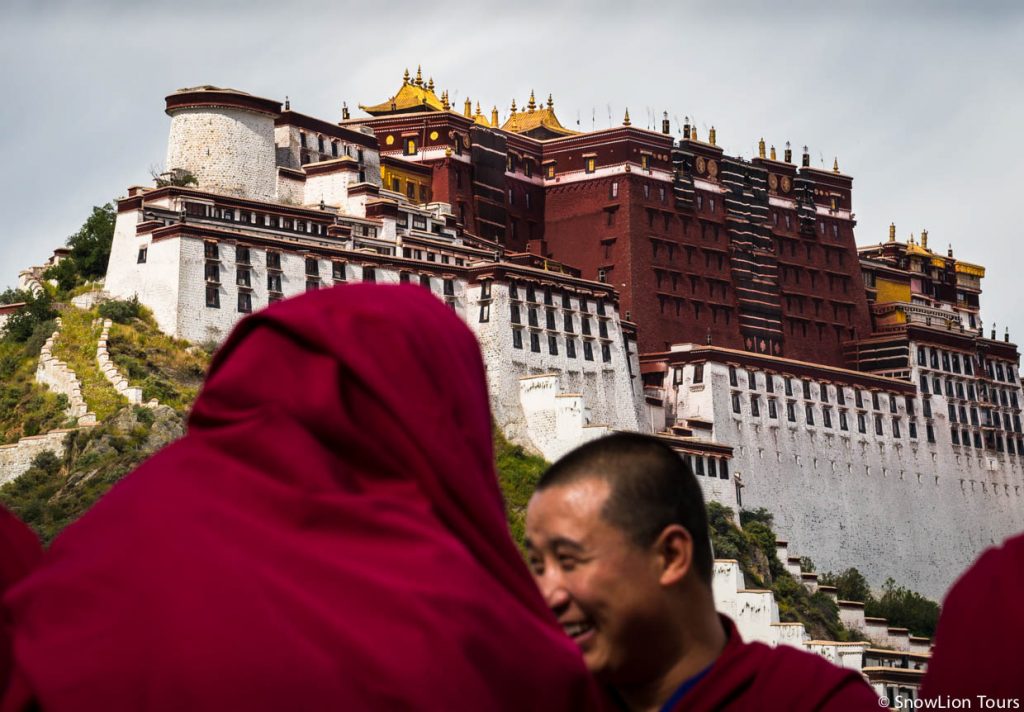
Potala Palace and Monks
No 2: Jokhang Temple
The Jokhang Temple is dedicated to the statue of Jowo Shakyamuni. This is the holiest temple in all of Tibet. Pilgrims from all over flock to this temple to catch a glimpse of the Jowo Buddha, a statue that is said to have been blessed by the Buddha himself. Although the whole site is commonly referred to as the Jokhang Temple, in reality it is not just a single building with single Buddha’s statue inside. Jokhang Temple is main structure, there is another temple called Trulnang Temple. The names of temples inside the Jokhang Temple: 1). Je Rinpoche Lhakhang or Je Tsongkapa Lhakhang, the founder of Gelupa and his 8 disciples. 2). Wopame Lhakang or Amitaba Lhakhang and medicine buddha chapel. 3). Tuje Chenpo Lhakang, housing the eleven faced avalokiteshvara, this is one of the most sacred Buddhist image in Tibet. 4). Maitreya Temple. 5) Othang Gyatso Lhakang, 6). Jowo Shakyamuni Lhakang. These are the main temples but you will see more similar temples among these big temples.
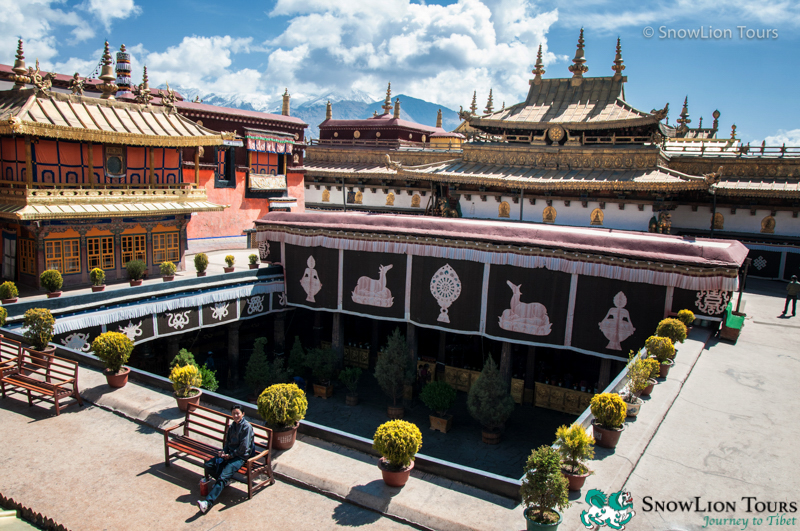
Jokhang Temple
No 3: Mount Everest
Mt. Everest also known as Chomolangma in Tibetan and Sagarmatha in Nepali located in the Mahalangur section of the Himalayas on the border between Tibet and Nepal. The Nepali side of Everest is called the the South Face and Tibetan side is called the North Face. The peak of Mount Everest rises at an elevation of 8848 m (29500 ft). Mount Everest is accompanied by a number of substantial peaks, including Lhotse (8,516 m/27,940 ft), Nuptse, (7,855 m/25,771 ft ), and Changtobse (7,580 m/24,870 ft). Tibetan Buddhists believe that each mountain is a home of a mountain god or goddess. Thus Mt. Everest is the abode of Miyo Langsangma (Tib.: མི་གཡོ་གླང་བཟང་མ Wylie: mi gyo glang bzangma) – one of the Five Sisters of Longevity (Tib.: ཚེ་རིང་མཆེད་ལྔ Wylie: tsering mchedma), which are honored by Tibetans in general and especially by adepts of Kagyu sect of Tibetan Buddhism. This incredible mountain has attracted many highly experienced mountaineers as well as capable climbers willing to summit the peak.
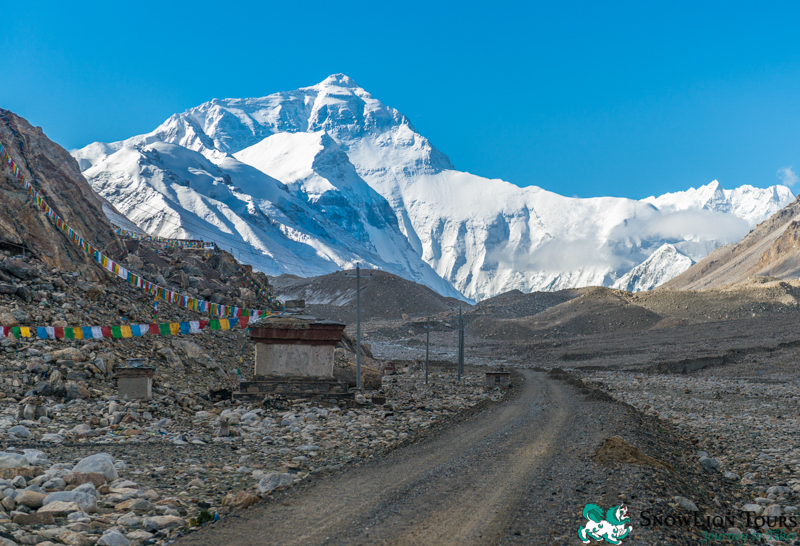
Mount Everest view from Everest base Camp
No 4: Namtso Lake
Namtso Lake also known as “Heavenly Lake” is located to the north of Lhasa and east end of Changtang Plateau. It’s the second largest salt lake in Tibet after Qinghai Lake / Lake Kukunor in Qinghai Province. The lake has 70 kilometers in length from east to west and 30 kilometers in width from south to north. Being the largest lake in Tibet Autonomous Region, Namtso Lake offers the beautiful vista of Tibetan Plateau you can imagine, the crystal clear lake is surrounded by the snow caped mountains and vast grasslands. Namtso Lake lies at altitude of 4700 m. There is a bird sanctuary in the eastern corner of the lake which is home for Black-necked cranes and some other wild life. While it is a popular place to visit in the summer, there are ways of making the trip unique — for example, take a short hike up a nearby mountain for a great view, challenge the nomads to a game of pool, and get a picture riding a yak.
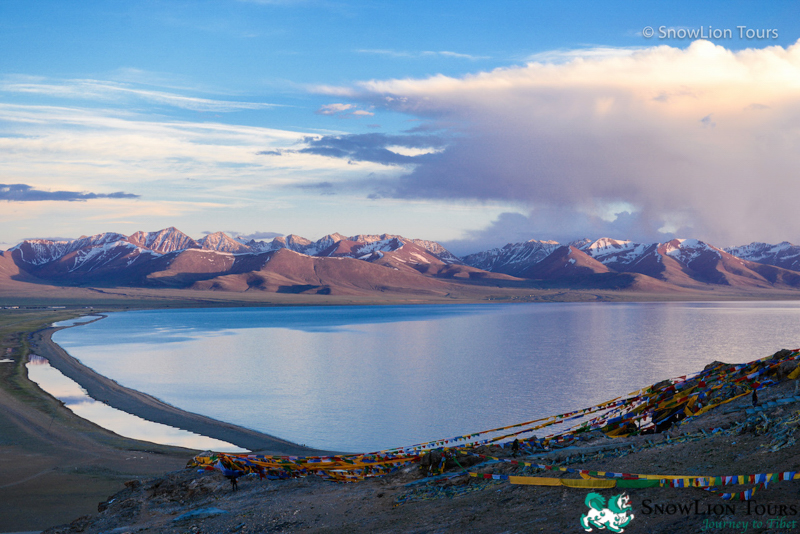
Namtso Lake
No 5: Yamdrok Yumtso Lake
The Sacred Lake Yamdrok Yumtso (4441m), means “ the lake of Turquoise”, situated around 100 km to the south of Lhasa. The paved road from Lhasa to Gyantse ascends to Kamba-la (4700m) pass. From the summit of Kamba-la, a stunning vista view appears before you: one side of the mountain is the bending of Yurlung Tsangpo (Brahmaputra River) valley and the other side is the Yamdrok lake, a freshwater lake which lies few hundreds meters below the road and the snow capped mountain Nojin Kangsang (7191m) in a distance. This lake ( 638 km² in area, 30m average depth and 60m at its deepest ) appears fabulous shade of deep turquoise in a clear day. Yamdrok Yumtso lake is one of the 4 most sacred and greatest lakes in Tibet along with Namtso Lake, Lake Manasarovar and Lhamo Lhatso Lake. It is an important site for pilgrimage, especially in a year of Sheep in Tibetan Calendar, hundreds of pilgrims all of Tibet will visit the holy lakes and make circumambulations around these holy lakes.
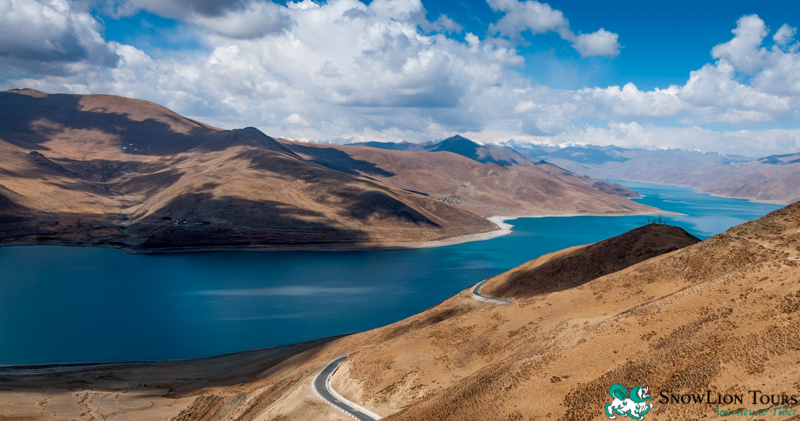
Yamdrok Yumtso Lake
No 6: Mt. Kailash
Mt. Kailash, which is known as the Precious Jewel of Snows in Tibetan, is considered by Buddhists to be the abode of the deity Chakrasamvara. It is said that if one does 108 circumambulations, one will reach enlightenment. The great Tibetan poet-saint Milarepa once declared, “There is no place more powerful for practice, more blessed, or more marvelous than this. Mt Kailash is considered holy by Hindus, Buddhists and Jains. In ancient texts, it is referred to as the center of the world. The reason can be understood from the geographical significance of its place: within 30 mi (48 km) radius, are the sources of mighty rivers Indus (north called “Sindhu” in India), Sutlej (in west), Brahmaputra (Yarlung Tsang-po in east), and Karnali (largest tributary to the Ganges in south). Hindus regard the peak as Shiva’s symbolic ‘Lingam’ and worship Mt Kailash, which is the Sanskrit name for the mountain. Bonpos believe the sacred mountain to be the place where the founder of the Bon religion landed when he descended from the sky. Tibetan Buddhists believe Kang Rinpoche, which means Precious Snow Mountain, is a natural mandala representing the Buddhist cosmology on the earth and the Jains believe this is the place where their religion’s founder was spiritually awakened.
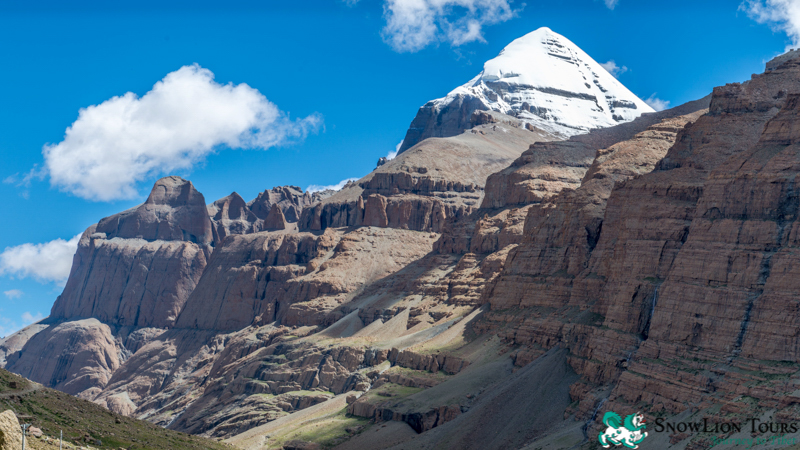
Mount Kailash in western Tibet
No 7: Guge Kingdom
Guge was an ancient kingdom in Western Tibet. The kingdom was centered in present-day Zanda County, Ngari Prefecture, Tibet Autonomous Region. At various points in history after the 10th century AD, the kingdom held sway over a vast area including south-eastern Zanskar, Upper Kinnaur district, and Spiti Valley, either by conquest or as tributaries. The ruins of the former capital of the Guge kingdom are located at Tsaparang in the Sutlej valley, not far from Mount Kailash and 1,200 miles (1,900 km) westwards from Lhasa. Guge was founded in the 10th century. Its capitals were located at Tholing and Tsaparang. Nyima Gon, a great-grandson of Langdarma, the last monarch of the Tibetan Empire, left insecure conditions in Ü-Tsang in 910. He established a kingdom in Ngari (West Tibet) in or after 912 and annexed Puhrang and Guge. He established his capital in Guge. Nyima Gon later divided his lands into three parts. The king’s eldest son Palgyi Gon became ruler of Maryul (Ladakh), his second son Krashis Gon received Guge-Puhrang, and the third son Degtsug Gon received Zanskar. Krashis Gon was succeeded by his son Yeshe ‘Od (947–1024 or (959–1036), who was a renowned Buddhist figure. In his time a Tibetan lotsawa from Guge called Rinchen Zangpo (958–1055), after having studied in India, returned to his homeland as a monk to promote Buddhism. Together with the zeal of Yeshes ‘Od, this marked the beginning of a new diffusion of Buddhist teachings in western Tibet. In 988 Yeshe ‘Od took religious vows and left kingship to his younger brother Khor re.
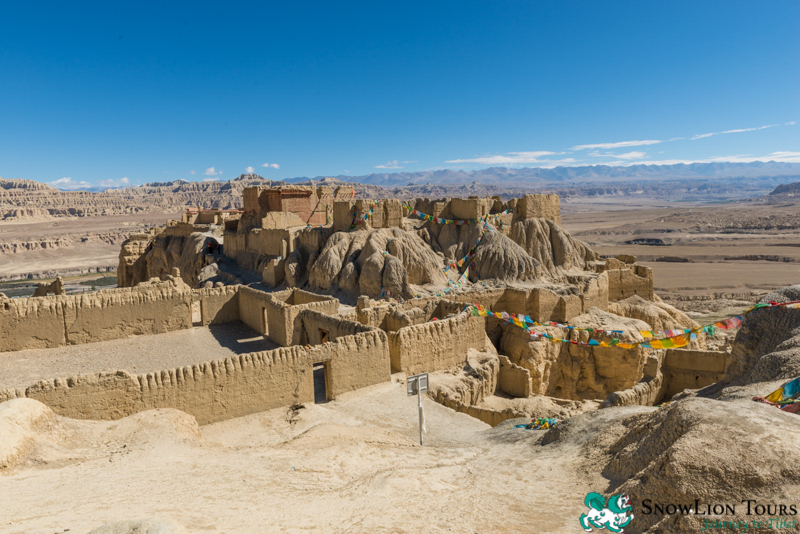
Top of Guge Kingdom in Tibet
No 8: Samye Monastery & Yumbulakhang Palace
Samye is Tibet’s oldest monastery, boasting over 1200 years of history. Nestled in a scenic valley, Samye is an important pilgrimage location shaped like a mandala. It is located in the Mchims phu valley, south of Lhasa, next the Hapori mountain, in the Yarlung Valley. The site is in the present administrative region of Gra Nang or Drananga Lhoka. The full name is Bsam yas mi ’gyur lhun grub gtsug lag khang, translated by some authors as the “Temple of Unchanging Spontaneous Presence.” Samye has a continuous history from eighth century to the present and has played an important part in the history of Tibet and China. and Yumbulakhang, a historic palace perched atop a craggy hill. According to Tibetan traditions, Yumbu Lakhang was erected in 1623 for the first Tibetan king, Nyatri Tsenpo, who descended from the sky with his grandma. It was probably built at the turn of the seventh and eighth centuries. During the reign of the 28th king, Thothori Nyantsen, in the fifth century CE, a golden stupa, a jewel and a sutra that no one could read fell from the sky onto the roof of the Yumbu Lakhang; a voice from the sky announced, “In five generations one shall come that understands its meaning!” Later, Yumbu Lakhang became the summer palace of the 33rd Tibetan king, Songtsen Gampo (604-650 CE) and his Chinese princess, Wencheng. After Songtsen Gampo had transferred the seat of his temporal and spiritual authority to Lhasa, Yumbu Lakhang became a shrine.
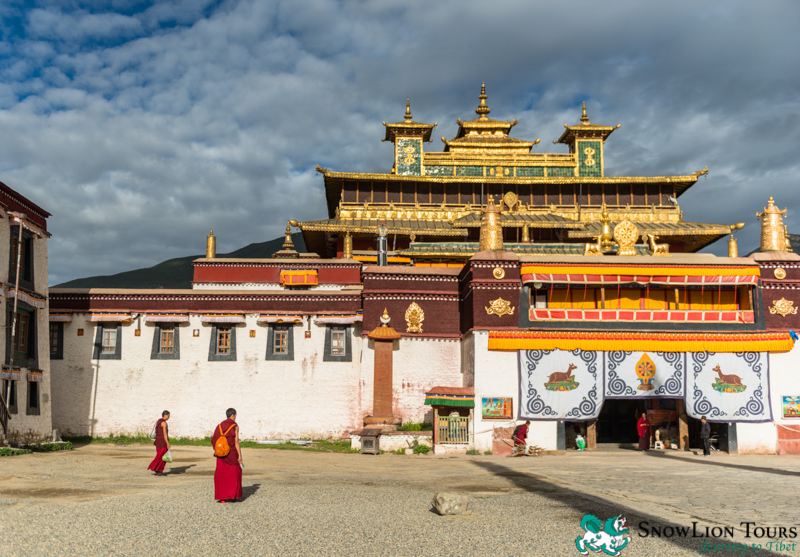
Samye Monastery
No 9: Tashi Lhunpo Monastery
Tashi Lhunpo Monastery is seat to the Panchen Lama, the second most important spiritual leader of Tibet. In 1447 the Monastery was founded by His Holiness the First Dalai Lama, Gyalwa Gendun Drup, in Shigatse, Tibet’s second largest city. It is one of the four great monasteries of Central Tibet and was supervised and looked after by the Dalai Lamas and Panchen Lamas. It has the glory of producing thousands of renowned scholars in the field of Mahayana Buddhist Philosophy as per ancient Indian Buddhist Universities such as Nalanda and Vikramalashila. During the lifetime of the 4th Panchen Lama, Lobsang Choekyi Gyaltsen, there were more than 3,000 monks in the Monastery and by 1959 there were 5,000, with another 2,000 monks affiliated to the Monastery living outside Tibet.
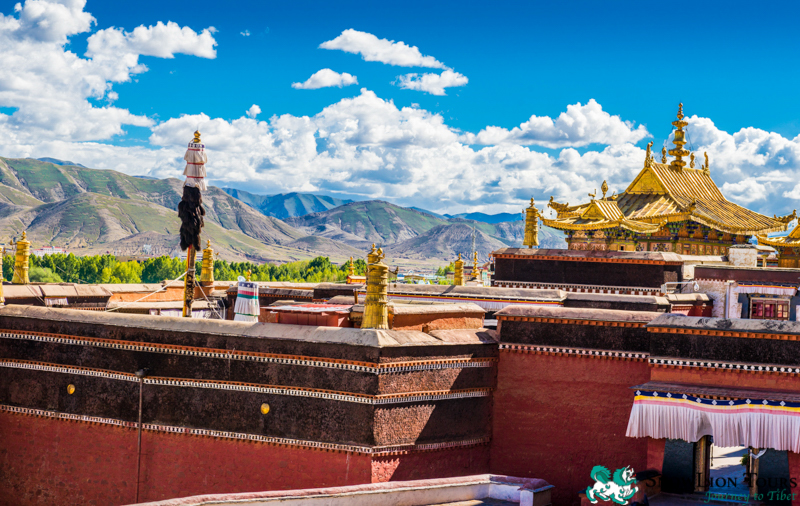
Tashilhunpo Monastery in Shigatse
No 10: Rawu Lake / Ranwu Lake / Rawok Lake
Ranwu Lake, named Ngan-tso in Tibetan, it is located in the Ranwu town, Chamdo Prefercture of the Tibet Autonomous Region, about 127 kilometers from Bome county in the west and 90 kilometers from Baxoi County in the east。The lake covers an area of 22 square kilometers, with a length of 26 kilometers and 3,807 meters above the sea level. it is surrounded by many scenic spots such as the Gangrigabu Snow Mountain in the southwest, the Azhagongla Glacier in the south and the Basula Peak in the northeast. The blue sky, green grassland around the lake and the white snow mountains consists of a tranquil and peaceful picture of the l//ake. continue about 2-3 hour walk up to the Lhegu Glacier (31km) which is one of the famous Glacier in Tibet. This region offers you a stunning natural scenic view.
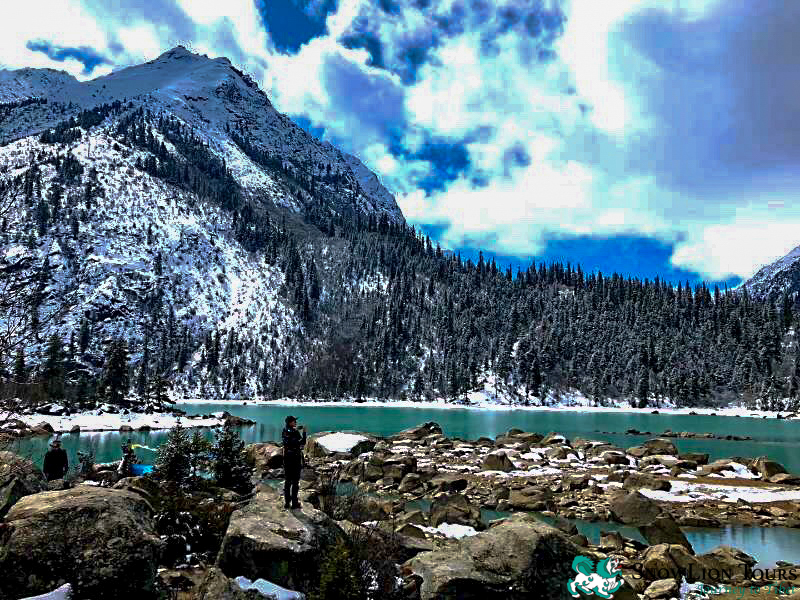
Rawok Lake / Ranwu Lake
